I want to create hierarchial mapping of nodes of networkx.DiGraph. It is shown on the right:
import networkx as nx
import matplotlib.pyplot as plt
from networkx.drawing.nx_agraph import graphviz_layout
H = nx.DiGraph([(0, 1), (0, 12), (1, 2), (1, 3), (3, 4), (3, 7), (4, 5), (4, 6),
(7, 8), (7, 9), (9, 10), (9, 11), (12, 13), (12, 14)])
kwargs = {'pos': graphviz_layout(H, prog='dot'), 'nodelist':[],
'with_labels':True, 'bbox': dict(boxstyle='round,pad=0.7')}
fig = plt.figure(figsize=(20,10))
fig.add_subplot(1, 2, 1)
nx.draw(H, **kwargs)
fig.add_subplot(1, 2, 2)
nx.draw(H, **kwargs, labels=labels)
plt.show()
The value of labels I use in my script is:
{0: (),
1: (0,),
2: (0, 0),
3: (0, 1),
4: (0, 1, 0),
5: (0, 1, 0, 0),
6: (0, 1, 0, 1),
7: (0, 1, 1),
8: (0, 1, 1, 0),
9: (0, 1, 1, 1),
10: (0, 1, 1, 1, 0),
11: (0, 1, 1, 1, 1),
12: (1,),
13: (1, 0),
14: (1, 1)}
Is there an easy way to create such kind of labelling in networkx or any other package?
